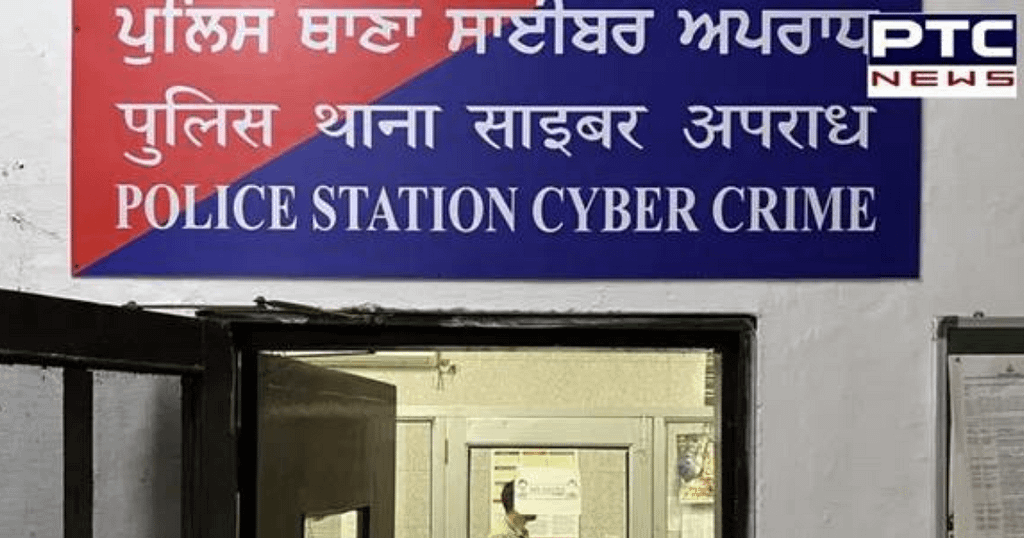Introduction
This post builds on the foundational concept of the building blocks of an organisation’s cybercrime investigation capability. We will look specifically at “Structures”—the first and perhaps most fundamental building block. We will examine two main structural models: the Local Resources and Partnership Model. These models represent agencies’ strategic choices to address cybercrime within their jurisdiction, directly influencing their investigation capability. By exploring these structures, the article aims to deepen understanding of their role in supporting cybercrime investigations, linking to the initial discussion on the building blocks of cybercrime investigation capability.
The Local Resources Model: Building In-House Capabilities
UNODC promotes long-term and sustainable capacity building in the fight against cybercrime through supporting national structures and action.
United Nations Office on Drugs and Crime
The Local Resources model is characterised by developing and utilising internal capabilities within local law enforcement agencies to respond to and address cybercrime. This model involves establishing dedicated cybercrime units or designating specific personnel tasked with various cybercrime investigative functions. These functions range from digital forensics to broader investigations of cyber activities. The financial support for this model primarily comes from the agency’s budget, supplemented by external funding sources such as grants when available.
This approach allows for a high degree of autonomy in decision-making, particularly concerning case prioritisation, which influences the agency’s organisational and jurisdictional considerations. The emphasis is on leveraging existing resources and expertise and, when necessary, recruiting individuals with technical skills to fill specialised roles. This strategy often leads to the civilianisation of certain positions, expanding the talent pool beyond traditional law enforcement backgrounds.
Adopting the Local Resources model, an agency commits to building and enhancing its in-house capabilities to tackle cybercrime effectively. This model allows agencies to respond swiftly to local cybercrime challenges, tailoring their approach to their jurisdiction’s specific needs and dynamics. It emphasises the importance of investing in specialised training and equipment to effectively equip personnel with the necessary tools to combat digital crimes.
Specialisation in Cybercrime Investigation: Centralised vs. Dispersed Units
Due to the unique challenges presented by cybercrime, as discussed in a previous blog post, most law enforcement agencies adopt some form of specialisation to enhance their investigative capabilities. Agencies often form a specialised cybercrime investigation unit. The structure of these units can vary significantly depending on the specific needs and characteristics of the agency. Some organisations may centralise their cybercrime efforts into a single, dedicated unit that handles all aspects of cyber investigations. This centralised approach allows for concentrated expertise and resources, providing a focused strategy against cybercrime.
Alternatively, an agency might opt for a dispersed structure, where multiple specialised cybercrime units operate within different divisions or locations. This approach allows for a broader reach and the ability to address cybercrime issues and the needs of victims, offering tailored responses more locally to the specific cyber threats affecting different areas under the agency’s jurisdiction.
The decision on whether to centralise or disperse specialised cybercrime investigation units within an organisation is influenced by several factors, including the size of the agency, the geographical area it covers, the volume and type of cybercrime activities encountered, and the available resources. For instance, larger agencies serving substantial populations and covering vast geographic areas may benefit from dispersed units that can respond more rapidly to local cybercrimes. In contrast, smaller agencies or those facing resource constraints might find a centralised unit more efficient, minimising redundancy and maximising the use of limited resources.
Regardless of the chosen structure, the move towards specialisation within law enforcement agencies acknowledges cybercrime’s complexity and technical nature. Specialised units, whether centralised or dispersed, are equipped with the necessary tools, training, and expertise to tackle cybercrime effectively, from digital forensics to online fraud investigations.
Implementation of the Local Resources Model: Punjab’s Cyber Crime Police Stations

In 2024, the Punjab Government, led by Chief Minister Bhagwant Singh Mann, initiated the establishment of 28 Cybercrime Police Stations across the state to enhance its cybercrime investigation capabilities. Directed by DGP Punjab Gaurav Yadav, this move embodies the Local Resources model by leveraging internal capabilities to address various cyber offences, including financial fraud, identity theft, and hacking.
These stations will be equipped with the latest technology and staffed by experts in digital forensics and cyber investigations under the guidance of the Additional Director General of Police (ADGP) Cyber Crime. Additionally, a Rs 30 crore fund was allocated to upgrade the Digital Investigation Training and Analysis Centre (DITAC Lab) and district-level Cyber Crime Investigation & Technical Support Units (CI&TSUs), further boosting the police force’s technological edge against cyber criminals.
This initiative aims to provide immediate support to victims and facilitate investigations, collaboration with global law enforcement, and public education on cyber safety. Through these specialised police stations, Punjab is significantly advancing its in-house response to the evolving challenge of cybercrime.
The Importance of the Operational Charter

A well-defined organisational charter guides cybercrime investigation units’ mission, objectives, and operations within the Local Resources model. This document is the foundational blueprint, outlining the unit’s purpose, goals, and the scope of its activities. It clarifies roles and responsibilities, ensuring that all unit members understand their duties and how they contribute to the agency’s broader objectives.
The charter is a compass for decision-making, particularly in allocating resources and prioritising cases. It ensures that the unit’s activities align with the agency’s overall strategy for combating cybercrime and addressing the specific challenges within its jurisdiction. The charter facilitates a focused and cohesive approach to cybercrime investigations by setting explicit expectations and goals.
Moreover, the organisational charter fosters alignment and collaboration within the agency and with external partners. It delineates the boundaries of the cybercrime unit’s work, reducing potential overlap or conflict with other units and enhancing synergy across departments. This clarity supports more effective interdepartmental cooperation and leverages the full range of the agency’s capabilities in the fight against cybercrime.
In addition, establishing a charter confers legitimacy and authority on the cybercrime investigation unit, empowering it to operate effectively within the organisational framework of the law enforcement
agency. It becomes a critical tool for the unit to advocate for the resources and support it needs, from specialised training and equipment to additional personnel.
Ultimately, the operational charter is essential for ensuring that the cybercrime investigation unit functions efficiently and effectively, with a clear direction and purpose. It is a critical element of building and maintaining the unit’s capability to respond to the evolving landscape of digital crime, highlighting the strategic importance of internal organisation and planning in addressing cybercrime challenges.
The Local Resources Model: Strengths and Weaknesses
Strengths
The Local Resources model grants law enforcement agencies significant autonomy, particularly in case prioritisation. This autonomy allows agencies to align their cybercrime investigation efforts with local needs and challenges, ensuring that resources are directed towards the most pressing issues within their jurisdiction. The flexibility inherent in this model is one of its greatest strengths, as it enables a tailored response to the unique cybercrime landscape faced by each community. Agencies can adapt their strategies, tools, and focus areas to address specific threats, whether targeting local cyber fraud schemes, combating cyberbullying in schools, or protecting critical local infrastructure from cyberattacks. This model empowers agencies to set their investigative priorities based on local intelligence and community impact, fostering a proactive and responsive approach to cybercrime.
Weaknesses
Despite its advantages, the Local Resources model faces significant challenges, particularly concerning capacity. Many law enforcement agencies, especially smaller ones, need more staff and equipment for effective cybercrime investigations. Cybercrime is a field that requires highly specialised knowledge and tools, from digital forensics software to secure data storage solutions. Recruiting and retaining personnel with the requisite expertise is a constant challenge, compounded by the competitive salaries offered by the private sector. Furthermore, the rapid pace of technological change means that equipment can quickly become outdated, requiring continuous investment in the latest tools to stay effective. These capacity challenges can lead to bottlenecks in the investigation process, with specialised units overwhelmed by the volume of cases. Additionally, the lack of resources can hinder the agency’s ability to engage in comprehensive training and development programs for their personnel, further impacting their capability to address sophisticated cyber threats. This scenario often results in a reactive rather than a proactive stance, with agencies needing help to keep up with the ongoing iteration in cybercriminal tactics.
The Partnership Model: Collaborating for Broader Reach
The biggest difference between the model we built to fight terrorism and the way we battle cyber threats is the importance of the private sector.
Christopher Wray, Director – Federal Bureau of Investigation
Overview
The Partnership Model represents a strategic approach to cybercrime investigation that emphasises collaboration across multiple law enforcement agencies. This model harnesses participating agencies’ collective resources, expertise, and jurisdictional reach to create a more formidable and comprehensive response to cybercrime. By uniting efforts, the model aims to address the challenges of cybercrime that often transcend local and national boundaries, requiring a coordinated and multifaceted approach.
Structure and Operation
At the core of the Partnership Model is the formation of a unified task force that integrates personnel from local, state, federal, and sometimes international agencies. This collaborative entity operates under a shared command structure, ensuring all actions are cohesive and aligned with the task force’s objectives. The model facilitates a centralised operation where investigators, analysts, and other specialists work together in a dedicated space, allowing for real-time collaboration and intelligence sharing.
Resource pooling is a critical aspect of the Partnership Model. Agencies contribute personnel, technological tools, and financial resources, creating a synergised pool that significantly enhances the task force’s capabilities. This collective resource base enables the task force to employ advanced investigative techniques, utilise cutting-edge technologies, and access a broader range of information and expertise.
The operation of these task forces is characterised by strategic planning, with activities ranging from digital forensics and data analysis to undercover operations and international collaboration. The centralised command structure aids in efficiently deploying resources to critical areas, prioritising investigations based on the severity and impact of the cybercrime, and ensuring a unified strategic direction.
By bridging the gaps between different jurisdictions and leveraging the strengths
of each participating agency, the Partnership Model amplifies the investigative capacity and reach of individual agencies and (in theory) fosters an environment of continuous learning and skill enhancement among the task force members.
The Utah Model: Partnership and Resilience in Cybercrime Investigation

What has become known as “The Utah Model” is a comprehensive approach by the Department of Public Safety in Utah, USA, to enhance cybercrime investigation capabilities, addressing a growing concern for cyber attacks within the state. This model emerged in response to a series of cyber incidents, including a significant attack where cybercriminals diverted $2.5 million from a state account and other breaches involving Utah residents’ personal and health information.
The model is notable for its emphasis on building in-house capabilities, fostering partnerships, and leveraging private sector and academic expertise. It operates on a philosophy that recognises the wide-ranging impact of cybercrime on national security, financial stability, and personal privacy. The Utah Model has led to the establishment of dedicated cybercrime units within the Department of Public Safety, prioritising cases based on severity and evidence quality and engaging in extensive training for personnel.
The Partnership Model: Strengths and Weaknesses
Strengths
Partnership Models such as the Utah Model highlight the significant advantages of specialised training and resource sharing among collaborative law enforcement agencies. One of the greatest benefits is the enhancement of collective investigative capability. When agencies pool their resources, they create a robust framework capable of addressing the multifaceted nature of cybercrime more effectively than any single entity could alone. This synergy allows for deploying advanced technological tools and methodologies across agencies, elevating the overall standard of cybercrime investigation.
Specialised training, a cornerstone of the Partnership Model, equips personnel with the latest skills and knowledge in cybercrime detection, investigation, and prevention. The collaborative environment also facilitates the exchange of best practices and experiences.
Weaknesses
Despite its strengths, the Partnership Model faces challenges, particularly concerning integrating diverse agency priorities and the potential for jurisdictional overlap. Merging priorities can lead to conflicts over case leadership, resource allocation, and strategic focus, significantly when the objectives of participating agencies diverge. These conflicts may slow decision-making processes and dilute the effectiveness of joint operations as compromises are pursued to accommodate the varied interests of all parties involved.
“Jurisdictional overlap” presents another layer of complexity, with agencies operating under different legal frameworks and operational mandates. This overlap can lead to confusion regarding authority, responsibility, and the scope of investigative powers, potentially hindering the task force’s ability to act quickly and decisively. Navigating the legal intricacies of cross-jurisdictional cybercrime can complicate evidence gathering, prosecution efforts, and the sharing of intelligence, affecting the overall efficiency and success of the partnership.
Conclusion
A hybrid approach is sometimes adopted, considering the strengths and limitations of the local resources and Partnership models. This allows for integrating elements from different models, capitalising on their strengths while mitigating their weaknesses. It combines the flexibility of decentralised models with the robustness and resource efficiency of centralised models.
Structure is not just an organisational chart or a set of procedures but the foundational building block upon which cybercrime investigation capability is built. A well-conceived structural model acts as the backbone that supports cybercrime investigation, from rapid response and adaptability to complex threats to fostering collaboration and sharing of best practices.

